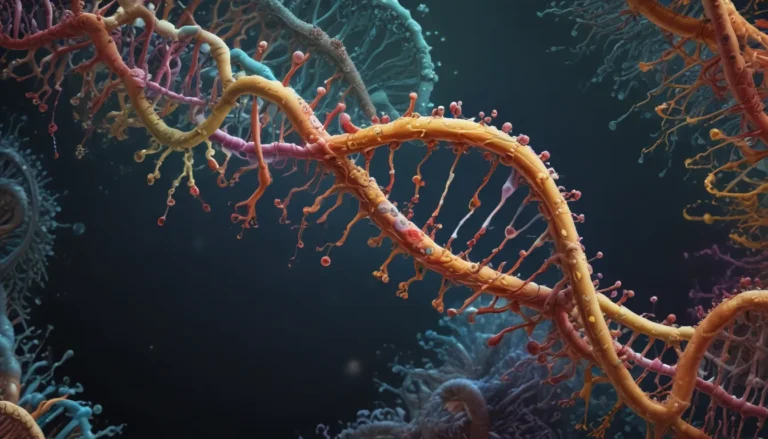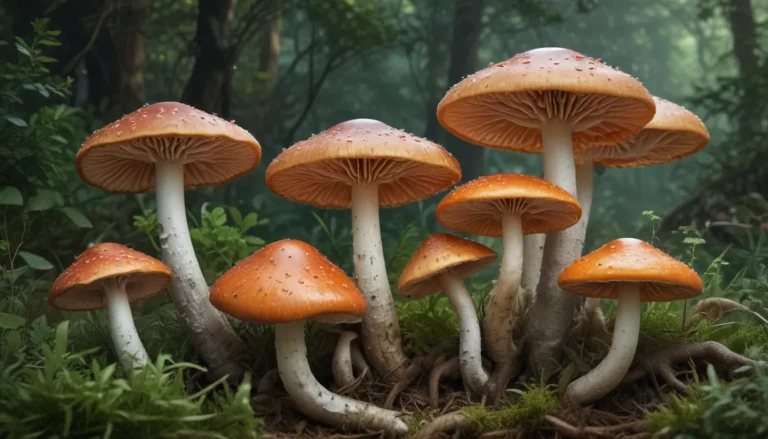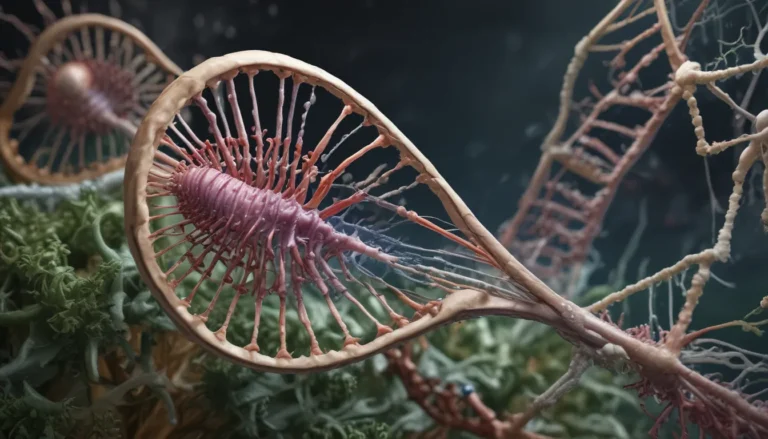A Note About Images: The images used in our articles are for illustration purposes only and may not exactly match the content. They are meant to engage readers, but the text should be relied upon for accurate information.
In the intricate web of life that encompasses our planet, trophic levels serve as the foundation for understanding the flow of energy and nutrients within ecosystems. From the primary producers that kickstart the energy transfer to the top predators that regulate populations, each trophic level plays a crucial role in maintaining the delicate balance of nature. Join us on a journey as we unravel 10 unbelievable facts about trophic levels that will leave you in awe of the complexities of the natural world.
The Marvels of Trophic Levels
Trophic levels are not merely abstract concepts but tangible principles that shape the functioning of our planet. By comprehending the interactions between different trophic levels, we gain insights into the dynamics of energy flow within ecosystems. Let’s dive into the depths of trophic levels and explore the captivating details that define these fundamental ecological constructs.
1. Producers: The Foundation of Life
At the base of the trophic pyramid lie the producers, such as plants and algae, who harness sunlight and nutrients to generate energy through photosynthesis. Without these primary energy sources, the entire food chain would crumble, underscoring the critical role of producers in sustaining ecosystems.
2. The Hierarchy of Trophic Levels
Each trophic level, from primary producers to apex predators, is designated based on the organism’s role in the food chain. This classification facilitates the study of energy flow and ecological dynamics, providing valuable insights into the interconnectedness of organisms within ecosystems.
3. Energy Inefficiency in Trophic Transfer
Only a fraction of the energy available at one trophic level is passed on to the next, with approximately 10% being transferred while the rest is lost as heat or utilized for life processes. This inefficiency explains why food chains typically consist of a few distinct trophic levels.
4. Tertiary Consumers: Lords of the Food Chain
Occupying the pinnacle of trophic levels are tertiary consumers, carnivores that prey on secondary consumers. These top predators play a vital role in population regulation and ecological equilibrium, showcasing the significance of trophic dynamics in maintaining ecosystem stability.
5. Trophic Cascades: Nature’s Domino Effect
Disruptions in trophic levels, whether induced by invasive species or habitat loss, can trigger trophic cascades that reverberate throughout entire ecosystems. This phenomenon highlights the intricate interdependencies between trophic levels and the far-reaching consequences of ecological disruptions.
6. Decomposers: Nature’s Recyclers
Decomposers, including bacteria and fungi, play a pivotal role in recycling nutrients by breaking down organic matter from deceased organisms. Through this process, decomposers release vital nutrients back into the environment, facilitating the growth of producers in subsequent trophic levels.
7. Ecosystem Foundations: Producers Rule
The lowest trophic level serves as the foundation of the entire food chain, with producers initiating the flow of energy through successive trophic levels. Their ability to convert sunlight into energy underscores their significance in supporting ecosystem vitality.
8. Ecosystem Variability: Tailoring Trophic Levels
While the traditional trophic pyramid illustrates a linear energy flow, trophic levels can vary across different ecosystems. For instance, in aquatic environments, phytoplankton assumes the role of primary producers, showcasing the adaptability of trophic dynamics.
9. Trophic Cascade Dynamics
In instances of trophic cascades, the number of trophic levels can be reduced, leading to ripple effects within the ecosystem. The removal or reintroduction of a predator can disrupt population dynamics and alter the balance of trophic interactions, emphasizing the fragility of ecological equilibrium.
10. Human Impacts on Trophic Levels
Human activities, including overfishing, deforestation, and pollution, can disrupt trophic levels and jeopardize ecosystem stability. These disturbances underscore the need for conservation efforts to mitigate the impacts of human-induced disruptions on trophic dynamics and biodiversity.
Unveiling Nature’s Secrets
Through the exploration of trophic levels, we gain a deeper appreciation for the intricate tapestry of life that unfolds in our natural world. From the energy flow between levels to the delicate balance that underpins ecosystem integrity, trophic levels reveal the harmonious interactions that sustain biodiversity. As stewards of the environment, understanding and preserving the delicate balance of trophic dynamics is essential for fostering a sustainable coexistence with nature.
FAQs
-
What are trophic levels?
Trophic levels represent the various levels in a food chain or food web, organizing organisms based on their sources of nutrition and energy. -
How many trophic levels exist?
Typically, ecosystems consist of four to five trophic levels, including primary producers, primary consumers, secondary consumers, and tertiary consumers, with occasional quaternary consumers. -
What is the significance of trophic levels?
Trophic levels elucidate the flow of energy and nutrients within ecosystems, offering insights into ecological relationships and ecosystem stability. -
How do disruptions in trophic levels impact ecosystems?
Disruptions in trophic levels can have cascading effects, influencing the entire ecosystem. For instance, a decline in primary producers can lead to population decreases across subsequent trophic levels. -
Can trophic levels vary in different ecosystems?
Yes, the number and composition of trophic levels can vary based on climatic conditions, geographic locations, and the presence of specific organisms in different ecosystems.
Embark on a journey of discovery as you unravel the mysteries of trophic levels and delve into the captivating intricacies of energy flow and ecological relationships within ecosystems. Let the wonders of trophic dynamics illuminate your understanding of nature’s interconnectedness and inspire a commitment to preserving the delicate balance of our planet’s ecosystems.





